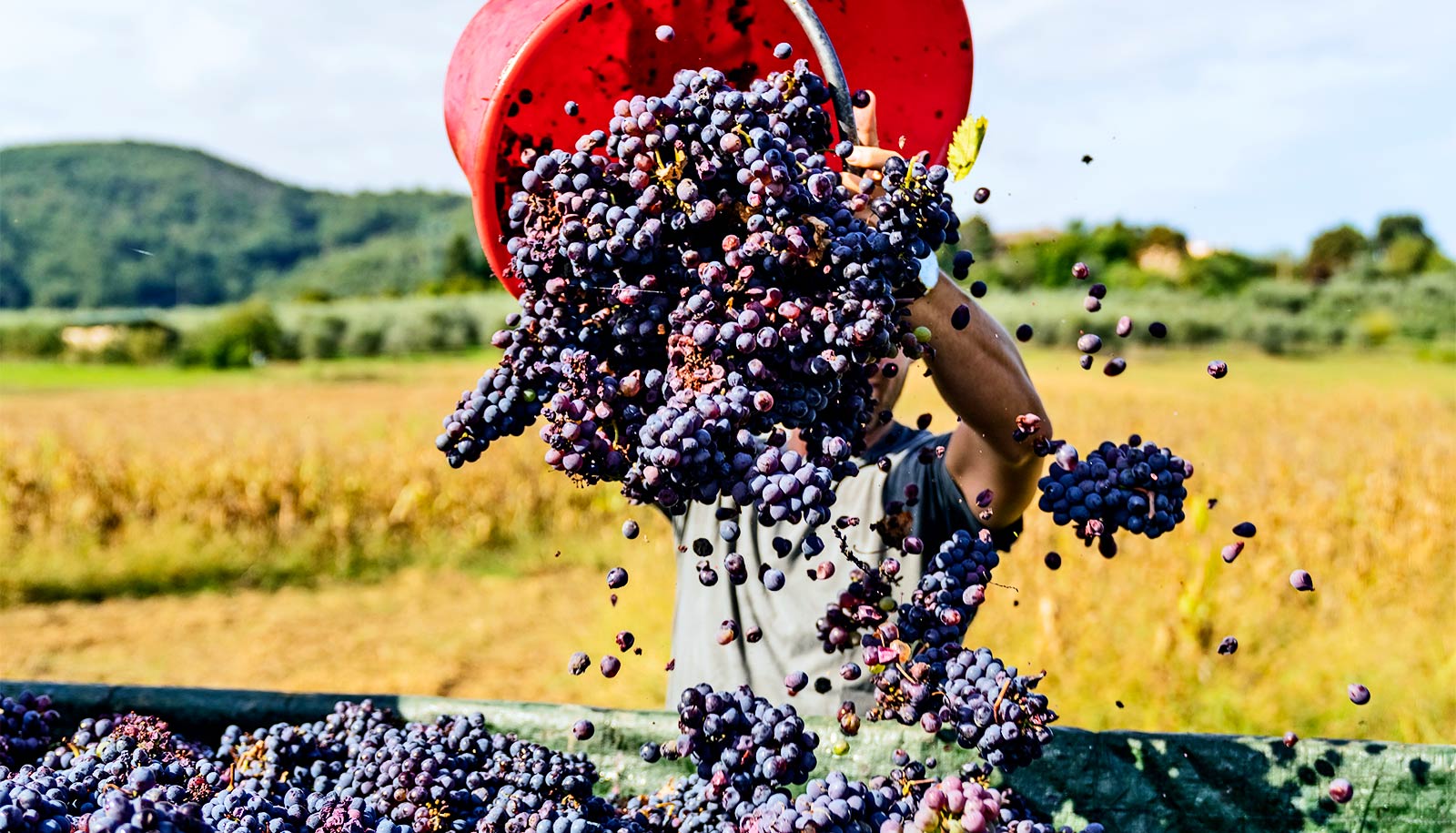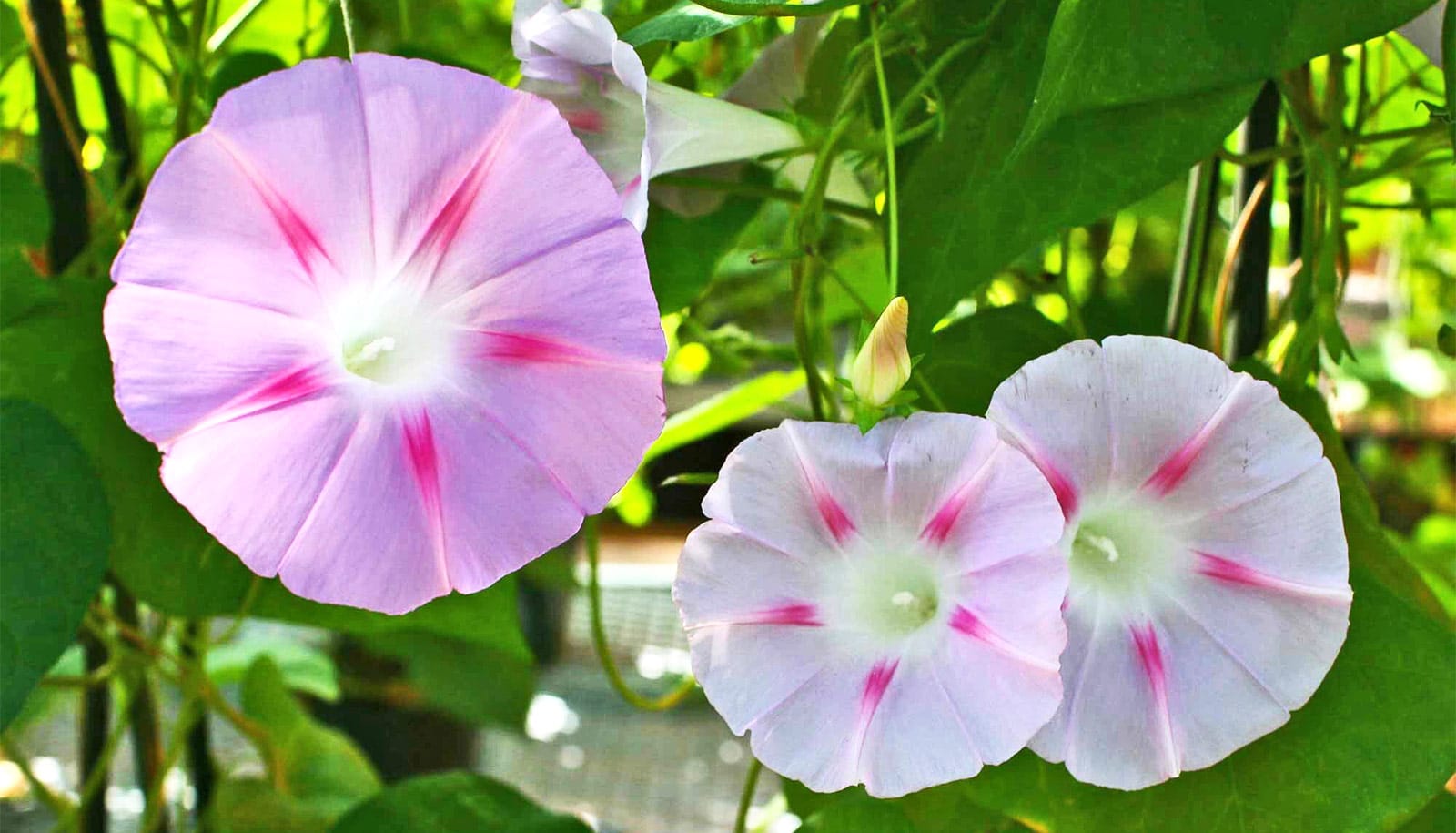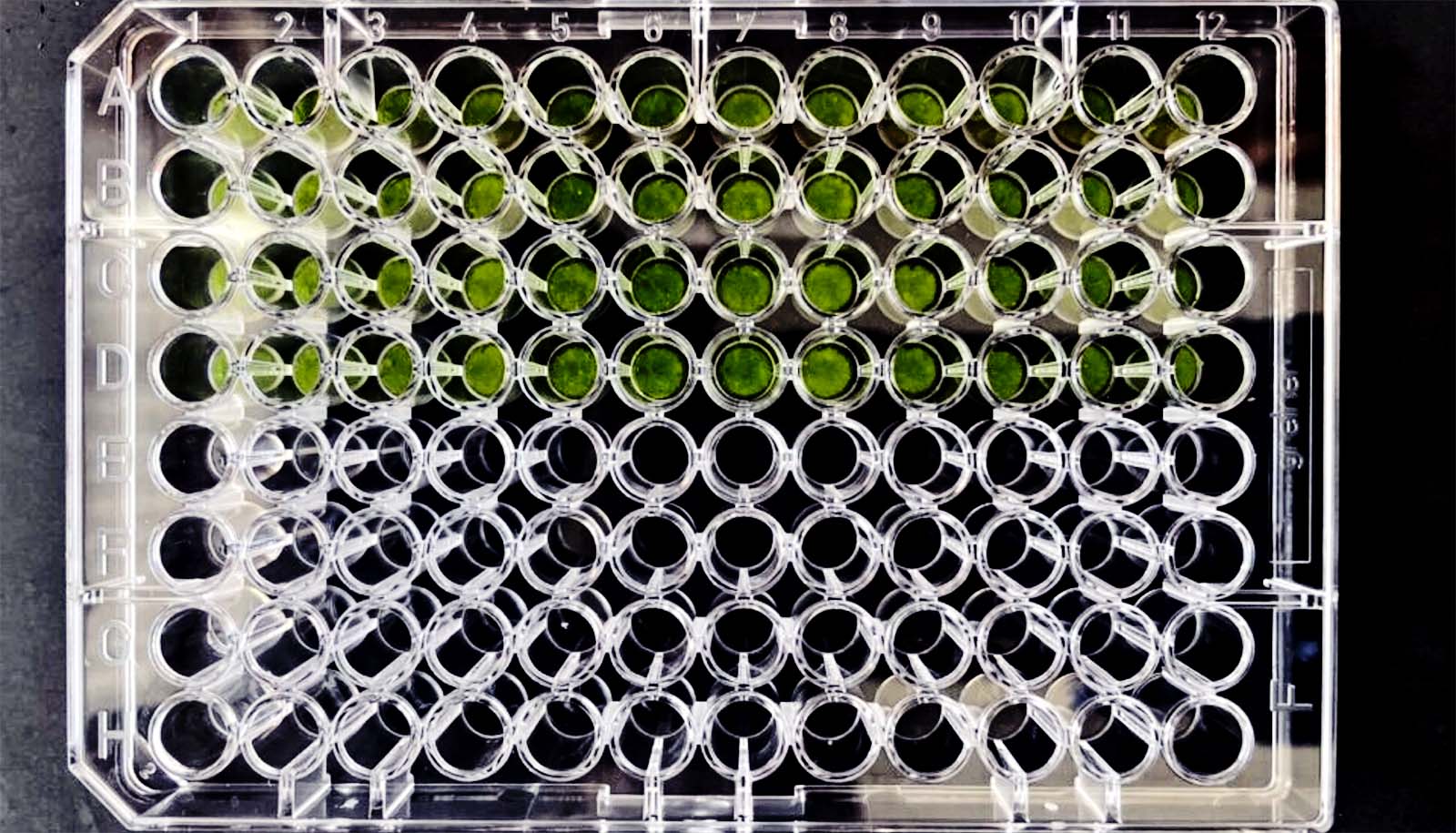
"The relationships between grape varieties and regions have historically been based on wine, without considering traits that affect drought or heat tolerance," says Megan Bartlett. "These findings show these varieties could be more resilient to climate change than expected." (Credit: Getty Images )
Wine grapes from hot places save water to cope
Water-conserving traits in wine grapes from warm, dry places may help traditional varieties from cooler regions cope with climate change.
Wine grape varieties from regions that are more prone to stress have traits that could help traditional varieties cope with climate change, researchers report.
Climate change is expected to make many grape-growing regions too hot and dry to produce high-quality wine from traditional varieties.
The new study in the Journal of Experimental Botany finds that varieties that produce their best wines in warmer, drier regions have traits that conserve water, helping the vines extend their water resources to last over the growing season.
“The relationships between grape varieties and regions have historically been based on wine, without considering traits that affect drought or heat tolerance,” says lead author Megan Bartlett, an assistant professor in the viticulture and enology department at the University of California, Davis. “These findings show these varieties could be more resilient to climate change than expected.”
The study examined how grapevines regulate their stomata—tiny pores found on the surface of leaves that allow plants to take in carbon dioxide for photosynthesis and expel oxygen. The regulation of these stomata affects how much CO2 is available for photosynthesis and how much water evaporates from the leaves. Grapevines must choose between opening their stomata to take in CO2 to produce sugars for growth and ripening or closing the stomata to reduce evaporation and water stress.
A little water stress improves wine by concentrating the flavors and aromas in the grapes. But too much will prevent grapes from achieving their ideal balance of sugars, acids, and tannins, creating flat, uninteresting wines.
The researchers examined traits for 34 varieties and used a global database of planting areas in different wine regions to define the associations between varieties and regions. The study focused on European regions, where irrigation is banned or restricted, to directly capture the stress imposed by the local climate.
The study found that the varieties grown in regions more likely to experience water stress, such as Italy’s Sangiovese and Montepulciano, kept their stomata more closed than varieties like Sauvignon Blanc from cooler, more humid regions.
“This strategy would help these varieties save water,” says coauthor Gabriela Sinclair, a research technician in the Bartlett lab.
Bartlett cautions that these traits may have unintended consequences as heatwaves become more extreme. Grapevines use evaporation to cool the leaves, the same way we cool ourselves by sweating. Restricting evaporation too tightly could allow leaves to reach damaging temperatures, reducing their future photosynthesis and limiting the sugars available for ripening.
“We have more work to do to understand how these traits will affect grapevines as the climate reaches new extremes,” says Bartlett. “These findings show that traits will be important to consider when we predict what will happen to different wine regions.”
Support for the research comes from the UC Davis College of Agricultural Environmental Sciences and Department of Viticulture and Enology, and by donations to the department from the Rossi family.
Source: UC Davis
The post Wine grapes from hot places save water to cope appeared first on Futurity .
Share this article:
This article uses material from the Futurity article, and is licenced under a CC BY-SA 4.0 International License. Images, videos and audio are available under their respective licenses.
Related Articles:
Morning glory flowers grew larger over a decade
March 17, 2023 • futuritySynthetic genetic circuits control plant roots
Aug. 19, 2022 • futurityLinks/images:
- https://doi.org/10.1093/jxb/eraa577
- https://www.futurity.org/chardonnay-wine-taste-aroma-genomes-2156012-2/
- https://www.futurity.org/plants-leaves-stomata-1860022/
- https://www.ucdavis.edu/news/can-water-saving-traits-help-wine-survive-climate-change
- https://www.futurity.org/wine-grapes-traits-climate-change-2489282/
- https://www.futurity.org


